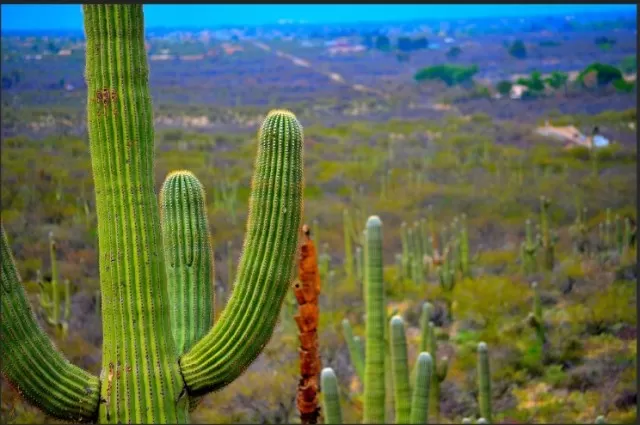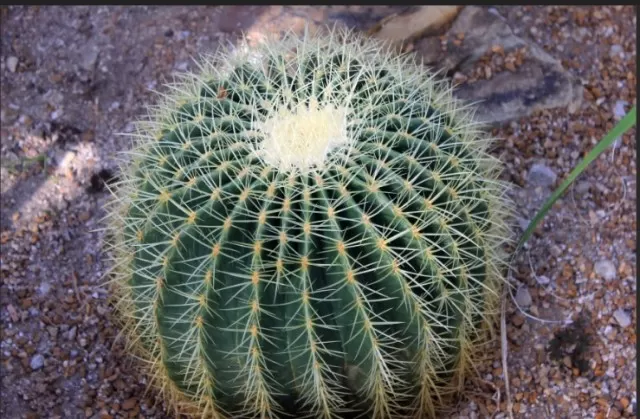At-Home Cactus Varieties: Exploring Different Types. Enter the enchanting realm of easy-care cacti, where radiant sunlight and minimal intervention form the cornerstone of their flourishing existence. If the prospect of introducing a touch of desert charm to your garden space beckons, look no further – for each of these captivating cacti stands as a gateway to a world of simplicity and natural beauty.
These hardy botanical companions require little more than a generous dose of bright light to thrive, making them the perfect choice for those seeking a harmonious balance between nature and ease. Whether you are a seasoned gardener or taking your first steps into the horticultural arena, these cacti extend an inviting embrace, ready to grace your garden with their unique allure.
Each cactus, a testament to nature’s resilience and artistry, beckons as an ideal starting point for your exploration of the desert flora. As you embark on this journey, you’ll discover that tending to these remarkable plants need not be a laborious task. Instead, it’s an opportunity to witness the beauty of adaptation, as these cacti gracefully adapt to their surroundings, showcasing their distinctive forms and charming characteristics.
Exploring the Delightful World of Cacti: A Guide to Cultivating Diverse Cactus Plants in Your Home

If you’re eager to diversify your indoor garden and introduce a touch of uniqueness, cacti might just be your perfect green companions.
Don’t let the fear of prickly spines deter you – there’s a fascinating array of cactus plants that sport a smooth exterior. Moreover, cacti exhibit captivating features such as delicate white hairs, vibrant yellow blossoms, and even whimsical shapes that can bring a sense of wonder to your living space.
What’s even more enticing is that cacti are the epitome of patience, growing leisurely and requiring minimal tending. Bid farewell to the hassles of frequent repotting, pruning, fertilizing, or watering – these hardy plants thrive on neglect.
In the world of succulents, cacti stand as distinct entities often confused with their fleshy counterparts.
The defining factor is that cacti possess either woody or herbaceous stems containing the life-giving chlorophyll. Within these plump stems lies a reservoir of water, and through the magic of photosynthesis, these plants sustain themselves.
A remarkable feature setting cacti apart is the presence of cushion-like areoles dotting their surfaces. While many cacti boast spines, it’s worth noting that these spines are specialized leaf structures evolved to safeguard the plant from nibbling critters and to provide a shield against the sun’s scorching rays.
Cultivating cacti, whether as striking outdoor focal points or charming indoor companions, is a gratifying endeavor that demands only a handful of uncomplicated steps.
For desert-dwelling cacti, bask them in the glory of full outdoor sunlight or bathe them in bright indoor illumination. Ensure their roots find solace in well-draining soil and exercise restraint when it comes to moisture – low to moderate levels will do the trick.
On the other hand, the lush residents of the jungle cacti family prefer a bit of shade and flourish in dimmer light conditions. As you delve further into this guide, we unravel the secrets of caring for these captivating plants.
Embark on a journey to discover the 13 diverse types of cacti that could find a perfect home within your abode. Your indoor garden is about to transform into a captivating cacti haven!.
Festive Cheer in the Midst of Winter: Unveiling the Enchanting Christmas Cactus
As the winter season envelops our surroundings in a cloak of monotone hues, the Christmas cactus (Schlumbergera spp.
) emerges as a captivating beacon of vibrant color, gracing our homes with its enchanting presence. Amidst the realm of cacti, the Christmas cactus stands as an anomaly, defying stereotypes and offering a unique spectacle. Often mistaken for its counterpart, the Easter cactus (Rhipsalidopsis), and occasionally referred to as the shrimp cactus, this botanical wonder adds a touch of diversity to the cacti family. Hailing from the lush landscapes of South America, particularly the shaded forests of southeastern Brazil, this remarkable plant thrives as an epiphyte – a master of growth that clings to trees, other plants, and even rocks, rather than rooting itself in the soil.
Behold the magical transformation of the Christmas cactus, which unfolds its blossoms twice within a single year.
The rhythms of its bloom cycle are orchestrated by the intricate dance of temperature and daylight duration, a phenomenon known as thermo-photoperiodic response. Delicately poised flower buds begin their emergence as the thermometer steadily dips into the range of 40 to 50 degrees Fahrenheit, or when embraced by the embrace of 14 hours of complete darkness each day.
This captivating succulent, with its seasonal splendor, holds the power to uplift our spirits and bring a burst of life to our homes precisely when the natural world outside seems to slumber.
The Christmas cactus, a true testament to the wondrous diversity of plant life, is a living reminder that beauty knows no boundaries – even in the most unexpected corners of the plant kingdom.
Majestic Giants of the Arid Southwest: Exploring the Saguaro Cactus

The Saguaro cactus, scientifically known as Carnegiea gigantea, stands as an enduring emblem of the American desert southwest, an awe-inspiring sentinel of the arid lands.
Revered for its remarkable growth and commanding presence, these native inhabitants of the Sonoran Desert – spanning across the realms of Mexico, California, and Arizona – achieve monumental heights that truly defy expectations. Stretching towards the heavens, these botanical titans can soar up to an astonishing 50 feet, with a robust girth of 10 feet, akin to living monuments sculpted by time itself.
When these magnificent giants are imbued with the gift of ample hydration, their substantial frames can weigh in at an astounding 12,000 pounds.
A true testament to the unhurried pace of desert existence, the Saguaro cactus is a master of patience, embarking on a leisurely journey towards its prime.
A testament to this unhurried pace of existence is the Saguaro’s flowering, a spectacle that may not grace the world until it has witnessed half a century of life, usually around the age of 50. Branching, another milestone in its life’s journey, often doesn’t emerge until the cactus reaches the grand age of 75, an awe-inducing testament to the wisdom of time.
Endowed with an extraordinary lifespan, Saguaro cacti become steadfast residents of the rocky desert soils, their roots extending deeply to embrace the hidden moisture concealed beneath the sun-baked surface.
A long and meaningful existence spanning up to two centuries unfolds, marked by their unyielding connection to the rugged terrain. Yet, their significance stretches beyond their tenacious survival; these towering giants create sanctuaries of life within their embrace.
Acting as nurturing abodes, they provide both a refuge for nesting birds and strategic perches for the hunt, as well as serving as bountiful sources of pollen and nectar that sustain a diverse array of insects and bats.
Intriguingly, these majestic behemoths also reveal their versatility as they seamlessly transition into the realm of indoor gardening.
For those who seek a touch of desert charm within the confines of their homes, Saguaro cacti prove to be splendid companions, requiring minimal attention while emanating a timeless allure.
The Saguaro cactus, a living monument to the beauty of the desert and the resilience of life, captivates hearts with its towering stature, enduring wisdom, and capacity to harmoniously support a multitude of creatures within its majestic presence.
Exploring the Allure of the San Pedro Cactus: Echinopsis pachanoi
Meet Echinopsis pachanoi, better known as the San Pedro cactus, a botanical wonder that bears the essence of the Andes Mountains coursing through its veins.
Originating from the picturesque landscapes of Argentina, Bolivia, Chile, Ecuador, and Peru, this captivating cactus thrives amidst the heights, flourishing at altitudes ranging from 6,600 to 9,800 feet above the embrace of the sea.
The San Pedro cactus, a true emblem of resilience, transcends geographical boundaries, captivating gardeners across the globe.
Its charm extends beyond its native terrain as it gracefully adapts to different environments, earning its place as a cherished addition to gardens and homes alike. Enthusiastic cultivators around the world have embraced the San Pedro cactus for its ease of growth, making it a popular choice for both indoor cultivation and the creation of fast-growing, picturesque landscapes in temperate climates.
A true testament to its adaptability, the San Pedro cactus thrives within the realm of xeriscaping, a landscaping practice that champions water conservation.
Its innate drought tolerance renders it a resilient survivor in temperate zones, where water can be scarce. Furthermore, this cactus demonstrates its prowess in regions blessed with more generous rainfall, provided it finds solace in deep, well-draining soil that caters to its unique needs.
Whether gracing the windowsill of a Cozy Home or adorning the serene expanse of a landscaped garden, the San Pedro cactus remains a steadfast symbol of nature’s artistry and the unbreakable bond between plant and environment.
Its story unfolds in each new setting, bridging continents and elevations to weave a tale of adaptability, beauty, and botanical marvel.
Embracing the Timeless Beauty of Barrel Cacti: Echinocactus and Ferocactus Varieties

Step into the enchanting realm of barrel cacti, where the plump and round forms of Echinocactus and Ferocactus species paint a vivid portrait of the North American desert southwest.
These botanical treasures, each a masterpiece of nature’s design, unfold their stories in the arid landscapes, boasting lifespans that span a century and standing as living witnesses to the passage of time. With their stature reaching a modest height of under 3 feet, these cacti embody a sense of understated elegance.
Barrel cacti have woven their way into the hearts of enthusiasts, becoming cherished additions to gardens and homes alike.
Their ornamental allure lies not only in their robust and charming appearance but also in the kaleidoscope of colors that their flowers proudly flaunt. Shades of yellow, orange, pink, and red burst forth, creating a captivating visual symphony that dances against the desert backdrop.
The world of barrel cacti is a realm of endless possibilities, with plant nurseries offering an array of captivating variations.
A mere glance at their spines reveals a captivating tapestry of diversity – from long, dense, and formidable spines to tightly clustered formations adorned with delicate cottony filaments. The remarkable range continues, with some barrel cacti species opting for a minimalist approach, showcasing few to no spines at all.
In this captivating family, it’s not just the spines that delight the senses; the flowers themselves contribute to the ornamental spectacle. These botanical gems flaunt an impressive palette of colors and textures, further adding to the visual tapestry of this remarkable species.
As you welcome barrel cacti into your world, you invite a slice of the desert’s grandeur, a tribute to nature’s ingenuity, and a celebration of the harmonious marriage between form and function.
With each blossom and every spine, barrel cacti stand as living artworks that connect us to the boundless beauty of the natural world, reminding us of the marvels that await our discovery.
*The information is for reference only.